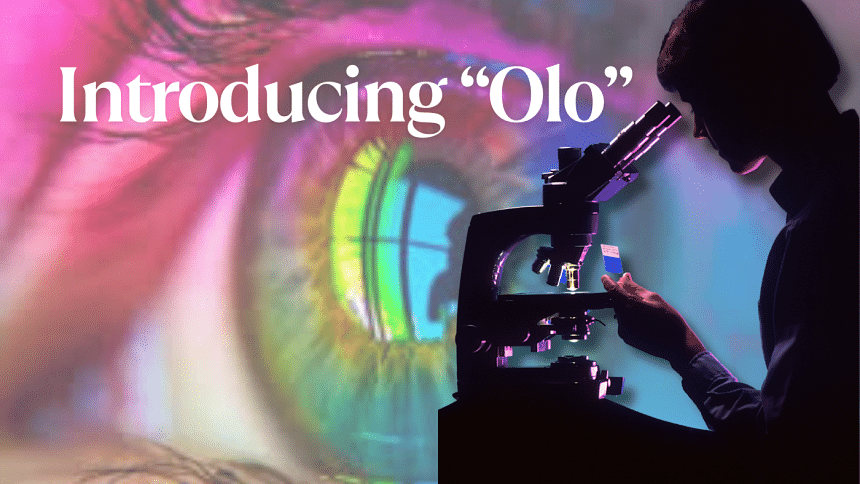Scientists say they've found a new colour, olo

Imagine a colour that's not on the rainbow, not in a crayon box, and not even something your brain has ever processed before. Sounds impossible, right? But according to a team of scientists in the U.S., that's exactly what they've done— uncovered a completely new colour that no human has ever seen naturally. They're calling it "olo", and it's being described as "mind-blowingly vivid".
Now, before you try to Google what it looks like or check your screen for a swatch — don't bother. Olo is not something you can see on a screen or paint on a wall. In fact, you need special lasers aimed directly at your eyeball to see it at all.
"Olo" came to life during an experiment in which laser pulses were carefully fired into the eyes of five volunteers. Although it sounds like something out of science fiction, it's very real, and the findings were published in the journal Science Advances.
So, what exactly is "olo"? According to Professor Ren Ng from the University of California, Berkeley — who not only co-led the research but also experienced the colour firsthand — it's a super intense blue-green shade that's "more saturated than any colour you can see in the real world."
To help explain it, Ng said it's like living your whole life seeing only light pastel pinks, and then suddenly someone shows up wearing a shirt in the boldest, richest shade of red you have ever imagined. It's not that "olo" is red—it's just that different!
The experiment that brought "olo" to life was published in Science Advances. It involved five participants, including some of the researchers themselves. Using a device affectionately called Oz (yes, like The Wizard of Oz), scientists fired ultra-precise laser pulses into the eyes of the participants. The goal? To isolate and stimulate a specific type of cell in the retina, the part of your eye that helps you see colour.
Here's the nerdy but cool part: our eyes use three types of cone cells to see colour: S-cones for blue, M-cones for green, and L-cones for red. Normally, when you look at anything, these cones are all activated together in different combinations, which is how you get the full range of colours you see every day.
In this experiment, the scientists managed to target only the M-cones, which does not naturally happen in real life. That unusual, isolated stimulation caused the brain to process a signal it had never encountered before. And the result was something totally new: olo!
Each participant who saw the colour was then asked to use a dial to try and replicate it using a visible colour spectrum. All of them struggled because olo does not exist in our normal visual experience — it lies outside the colour boundaries your brain is used to.
Not everyone is ready to call this a brand-new colour just yet. Professor John Barbur, a vision scientist from City St George's, University of London, praised the experiment as a major technological achievement but added a note of caution. He explained that changes in how cone cells are stimulated can make a colour appear more intense or brighter, but that does not necessarily mean it's a completely new colour.
While this might sound like a strange side project for sci-fi fans, it could actually have serious implications, especially for people with colour blindness. If scientists can learn how to manipulate cone cells in such a targeted way, they might be able to help those who cannot perceive certain colours experience them for the first time.
Professor Ng and his team are hopeful. They admit that seeing olo in everyday life is a long way off. You will not be able to experience it through a VR headset or a new smartphone anytime soon but the discovery could pave the way towards a deeper understanding of how vision works and how we might one day expand it.

 For all latest news, follow The Daily Star's Google News channel.
For all latest news, follow The Daily Star's Google News channel. 



Comments